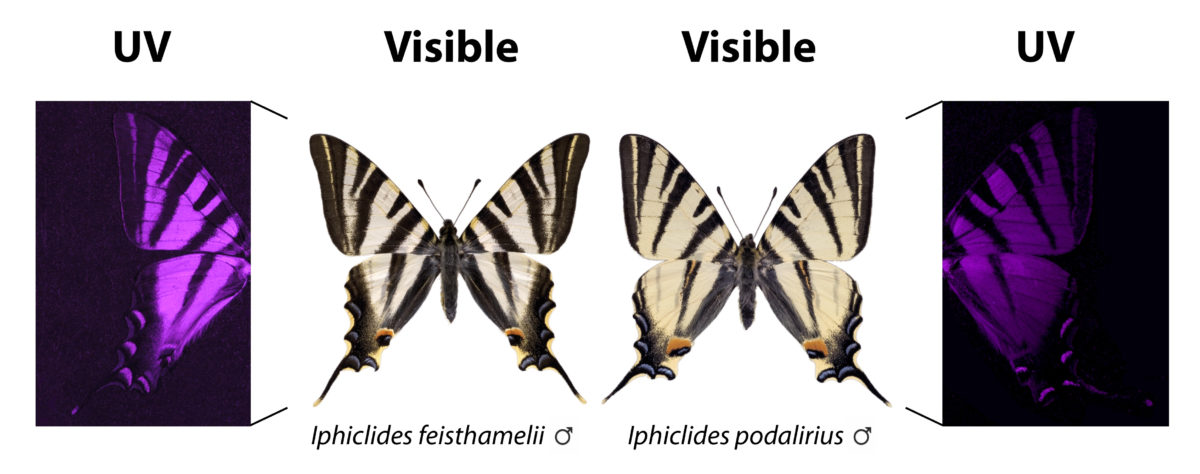In this image, from the Butterfly Diversity and Evolution Lab led by Roger Vila, we can see the Southern Scarce Swallowtail butterfly which, until recently, was considered to be a subspecies of the Scarce Swallowtail butterfly. For the human eye both species were almost identical, but scientist have discovered that there are differences when it comes to “butterfly eyes”.
Female butterflies are very strict when choosing a partner, as they seek for those males of their specie with a healthier appearence. The colour intensity of males’ wings, which females can see, would determine the choice of a certain male to mate.
We can only see this coloration under ultraviolet light, but researchers from the Institute for Evolutionary Biology (IBE: CSIC-UPF) have been able to photograph it. The males of the species Southern Scarce Swallowtail (Iphiclides feisthamelii) show in their wings a pattern of reflectance in the light more intense than the species Scarce Swallowtail (Iphiclides podalirius). This discovery has made it possible to describe the species as two different species, after years of confusion.

So far it was believed that the Southern Scarce Swallowtail was a subspecies of the Scarce Swallowtail, since despite subtle morphological differences there were no notable genetic differences. The taxonomic confusion turns out to be due to a parasitic bacterium called Wolbachia. The bacteria lives inside the cells of the insects and it is transmitted maternally to the offspring, in the same way that the mitochondrial DNA.
The IBE research group has discovered that a transfer of mitochondrial DNA from the butterfly Scarce Sswallowtail to the Southern Scarce Swallowtail, mediated by the Wolbachia bacteria, has been the cause of the confusion that has stirred up the scientific community for so many years. The Wolbachia bacteria had first infected the Scarce Swallowtail butterfly, and during a cross with the Southern Scarce Swallowtail, it would have transmitted the genetic material of one individual to the other. In this way, the study provides these species as an animal model to study the effects of parasitic bacteria on the evolution of insects.
“We are beginning to understand how butterflies perceive the world and we keep being surprised by their ‘superpowers’: they see more colours than us, they can detect polarized light and feel the magnetic north, without mentioning their refined chemical senses”, Villa adds.
Would you like to see your photo here? Please send us pictures related to science or the PRBB to ellipse@prbb.org.






